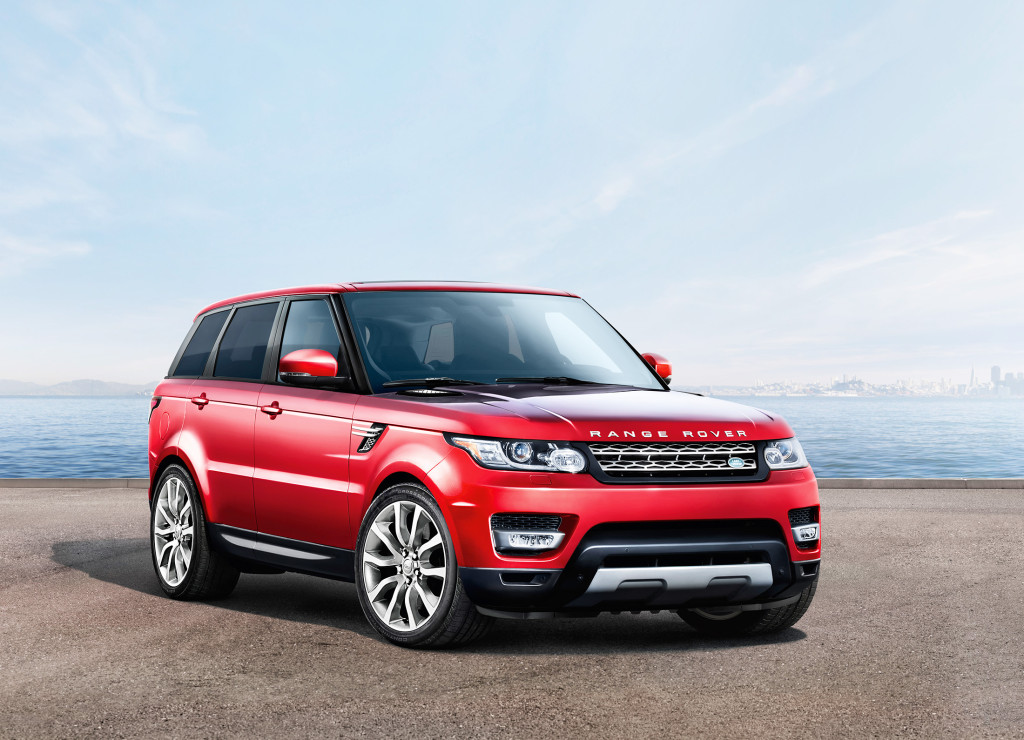Cargazing
By Derek Price
Vehicles like the Dodge Caravan Sport always give me a chuckle.
It’s not the car itself so much as the “Sport” badge being applied to something so obviously un-sporty, as if I’ll see Dodge minivans racing around the giant, banked oval of Texas Motor Speedway or burning up the pavement at a local drag strip.
With the Range Rover Sport, though, things get much more serious. That’s because more than anything else — more than the box-shaped body, the fancy four-wheel-drive system and the leather-covered interior — the Land Rover brand is known for one thing: authenticity.
When a Land Rover says something, it means it. And in the case of the Range Rover Sport, that one additional word makes a world of difference by turning a legendary off-road machine into an equally capable on-road smile factory.

An adjustable air suspension gives the Range Rover Sport a wide range of travel, letting it lower the SUV for highway driving and raise it up for traveling off the pavement.
Are there trade-offs? Of course. The bigger, more expensive Range Rover with its longer wheelbase and more generous ground clearance is the vehicle I’d choose if I had to get out of Rwanda in a hurry.
But here in America, where the Range Rovers zipping around the suburbs may only experience the off-road thrills of splashing through puddles and scraping their pretty wheels on steep concrete curbs, the more nimble Sport model could make more sense.
And if you do need it to do serious off-roading, it’s more than capable. I’ve driven a Range Rover Sport on narrow trails in the Texas hill country and was impressed with just how sure-footed it felt, even on loose, rocky or muddy soil on steep inclines. It climbs like a mountain goat.
Even more impressive is how well it transitions back to driving on the pavement, helped in no small part by the air suspension that can raise or lower the vehicle’s height by up to seven inches. That’s enough to make it feel like two completely different SUVs when you switch between its on-road and off-road settings.
While anything bearing the Range Rover name has long been synonymous with “gas guzzler,” that’s started to improve lately. An all-new design that debuted in 2015 used an aluminum unibody frame — as opposed to the old design with a steel unibody riding on top of a steel frame — to reduce the weight by around 800 pounds. That’s a huge difference that helped my test vehicle achieve a not-too-unreasonable 23 mpg rating on the highway.
The big question, though, is whether losing all that mass will also make it lose the famous, built-from-rock driving feel that makes Range Rovers and Range Rover Sports so unique in the marketplace.

Range Rovers are famous for their leather-covered interiors, and the smaller Sport models are nearly as opulent.
This new generation definitely feels different and more snappy now that it’s gone on a diet, but it didn’t have the unpleasant side effects that I was expecting, like extra road noise transmitted into the cabin. It’s still a quiet, peaceful place to spend time on the highway, even if it’s not as cushy as the full-size Range Rover.
Fortunately, your wallet will be cushier with the Sport. It starts at $64,950, which is exactly $20,000 lower than the Range Rover’s base price.
My tester with the HSE trim cost around $70 grand and added an extra $10,000 in options, including a panoramic sunroof, premium audio system, blind spot sensors and tow package.
It came with the 340-horsepower base engine that would be good enough for most luxury SUVs but pales in comparison to some other offerings for buyers with the means to pay for them. You can also get a 5.0-liter, 510-horsepower V8 in the Supercharged version starting at $79,950 or a 550-horsepower V8 in the insanely fast SVR version for $111,350.
That’s just how over-the-top Land Rover is. And I love it.
At a Glance
What was tested?
2016 Range Rover Sport HSE ($69,950). Options: Front Climate Comfort and Visibility package ($2,620), Extra Duty Package ($1,750), Tow Package ($900), premium audio system ($1,850), 20-inch wheels ($350), black lacquer wood trim ($350), protection package ($537). Price as tested (including $995 destination charge): $79,302
Wheelbase: 115 in.
Length: 190.9 in.
Width: 81.6 in.
Height: 70.1 in.
Engine: 3.0-liter supercharged V6 (340 hp, 332 lb.-ft.)
Transmission: Eight-speed automatic
EPA Mileage: 17 city, 23 highway
RATINGS
Style: 8
Performance: 10
Price: 4
Handling: 8
Ride: 7
Comfort: 8
Quality: 9
Overall: 9
Video Review:
2016 Range Rover Sport
bit.ly/16rrsport
Why buy it?
It’s a luxury off-roader that transitions exceptionally well to on-road manners. It can climb trails like a mountain goat but still manages to be fun on winding roads.
